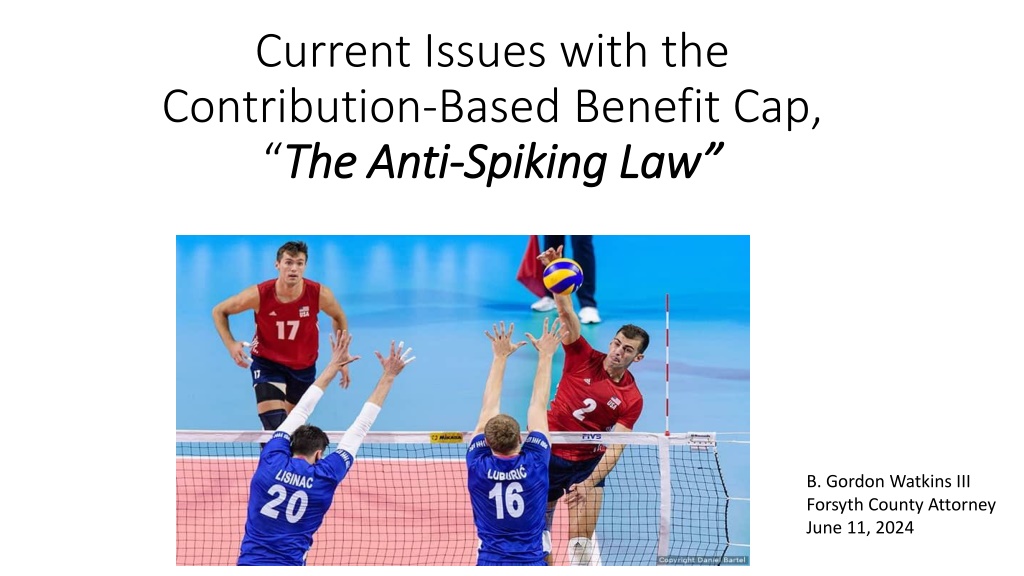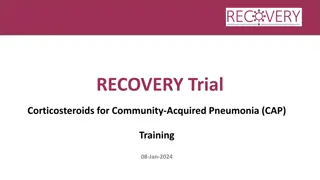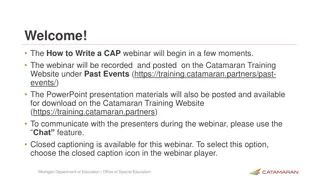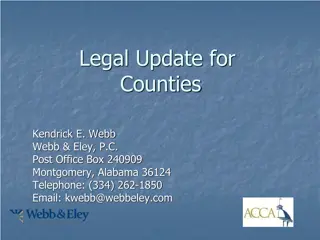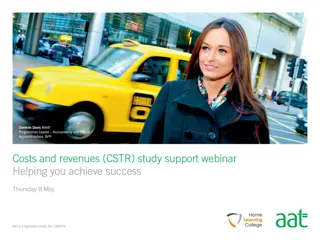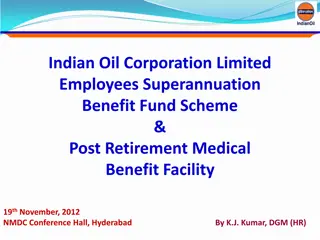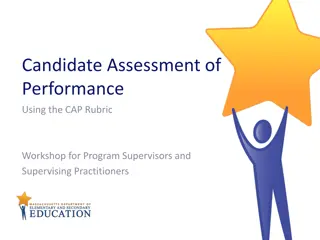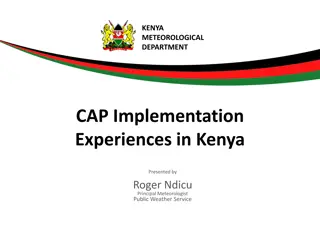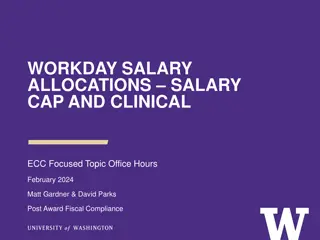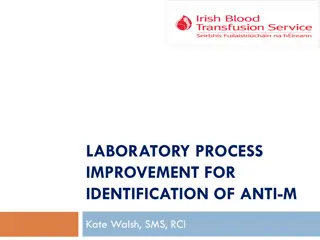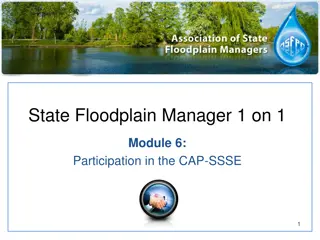Exploring Current Issues with Contribution-Based Benefit Cap and Anti-Spiking Law
Delve into the current challenges surrounding the Contribution-Based Benefit Cap and Anti-Spiking Law, including concerns about pension calculations, vacation and sick leave impact, and the calculation of spiking amounts affecting highly paid employees.
Download Presentation

Please find below an Image/Link to download the presentation.
The content on the website is provided AS IS for your information and personal use only. It may not be sold, licensed, or shared on other websites without obtaining consent from the author. Download presentation by click this link. If you encounter any issues during the download, it is possible that the publisher has removed the file from their server.
E N D
Presentation Transcript
Current Issues with the Contribution-Based Benefit Cap, The Anti The Anti- -Spiking Law Spiking Law B. Gordon Watkins III Forsyth County Attorney June 11, 2024
How Spiking is Portrayed They don t want to pay for retirement compensation decisions that result in inflated lifetime pensions for their highest-paid employees, Treasurer Folwell said. Instead, they want to spread their costs among all members of the retirement system, which is patently unfair to those other employers who are abiding by the letter and spirit of the law. -The Treasurer was referring to local school boards which had filed suit regarding anti-spiking payments.
How LGERS Pensions are Calculated Average of 4 Highest Years of Earnings x Years of Service x 1.85% Last Year of Service includes cashed-in vacation, which is typically 6 weeks for long-term employees. This represents an 11.5% increase in the last year s salary, or a 2.9% increase in the 4-year average. Sick leave can be added to Years of Service, which is typically 12 months or more for long-term employees. For a 30-year employee, 12 months are equivalent to a 3.3% increase.
Effect of Vacation & Sick Leave Credit 2.9% from Vacation + 3.3% from Sick Leave = 6.2% of Extra Benefits Put another way, 1 Year of Sick Leave is equivalent to a raise of 13.2% (13.2%/4 years = 3.3%) Extra Benefits are equivalent to a large, last year raise: 11.5% Vacation + 13.2% Sick Leave 25% raise equivalent Although both are explicitly authorized by statute, the Extra Benefits will tip some highly paid employees over the Anti-Spiking threshold.
Calculation of Contribution-Based Benefit Cap (Value of Accumulated Benefits/Annuity Factor) x CBBC Factor Accumulated Benefits = Employee s share of pension contributions (6% of salary), with an assumed 4% gain each year. Annuity Factor = Actuarial Number based upon expected mortality CBBC Factor = 4.7, a number set by the State Pension Board of Trustees
Calculation of Spiking Amount (Earned Pension Benefit Cap) x Annuity Factor = Spiking Amount Example: $90,000 Earned - $79,000 Benefit Cap = $11,000 Annuity Factor for Retiring at Age 54 = 13.345 Spiking Amount = $11,000 x 13.345 = $146,795 This is for an employee with an average salary increase of 6.9%. Starting salary was $12,000 before rising through the ranks to become a department head.
Determining Spiking: a Combination of Factors William: Can I ask why you are wearing that? Spike: Combination of factors. No clean clothes.
Is Prudence a Spiker? Probably. NC Treasurer s Example: 6% annual raises annually won t trigger the Pension-Spiking law if Prudence retires at age 57. But she will be a spiker if: 1) She receives credit for vacation time; 2) She receives credit for sick leave; 3) She retires before age 57; 4) She received higher raises in the last few years than in earlier years. This could be due to a promotion, inflation, or job market tightening.
Examples on Non-Spiking Average Raise of 6.4% over 30 years, 4.4% over the last 15 years, 7.5% in last 4 years. Average Raise of 6.2% over 30 years, 4.6% over the last 15 years, 7.2% in last 4 years. TIMING IS EVERYTHING. RAISES EARLY IN AN EMPLOYEE S CAREER ARE LESS LIKELY TO TRIGGER SPIKING.
Examples of Spiking Average raise of 6.5% over 15 years, 7.3% over the last 4 years. Age 54, amount $250,000. Average raise of 7.9% over 28 years, 4.4% over the last 15 years, 5.9% over the last 4 years. Vacation & Sick Leave caused the spiking. Age 60, amount $50,000. Average raise of 6.9% over 28 years, 6.3% over last 15 years, 6.9% over the last 4 years. Age 54, amount $150,000. AGE IS CRUCIALLY IMPORTANT. BECAUSE OF THE ANNUITY FACTOR, YOUNG RETIREES ARE FAR MORE LIKELY TO TRIGGER SPIKING, AND THE AMOUNT WILL BE HIGHER.
Impact For employees who entered the retirement system prior to January 1, 2015, the County is obligated to pay any anti-spiking fee. Forsyth has employees retiring in the near future which will require the County to pay $300,000 in anti-spiking payments. Neither employee has received extravagant raises or been paid above-market salaries. Other counties have paid millions in anti-spiking payments.
The Law Has Been in Effect for Almost 10 Years What Has Changed? Inflation Tight Labor Market: Historically Low Unemployment Rates necessitate wage competition with the private sector and with each other.
Paying Employees a Market Wage = Spiking For decades, the inflation rate never exceeded 4%, usually 1.5-3%. Many counties provided 2-4% raises annually. This would not trigger the pension spiking formula. No longer. In order to keep up with inflation and wage competition, counties have had to increase salaries. 5-6% raises, together with promotions, vacation pay, and sick leave, create spiking. The Treasurer s Office only assumes a growth rate of 4% in accumulated contributions, even though its investment return is 6.5% or higher.
Counties must Prepare for Extensive Liability Finance Directors are supposed to provide county commissioners with regular updates regarding the potential liability for highly paid employees (over $130,000 approximately) if they retire in the next year. Be careful that the potential liability listed may underestimate the true liability. For example, an employee s pension dramatically increases when the employee reaches full retirement status. A pension calculated for an employee with 25 years experience at age 59.99 is 80% of the amount calculated at age 60. A single day can change the County s liability by over a hundred thousand dollars.
Issues that Need to be Addressed Counties may be liable for real spiking, but we have to recognize the economic environment in which we live. It makes no sense to penalize counties for paying a market wage to retain their leading employees. The spiking calculations need to be updated. Is 4% a realistic number to use for an employee s investment gains? The pension system earns 6.5% or more. If 6.5% were used to calculate accumulated contributions, almost all spiking would disappear.
